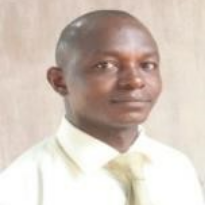International Journal of Image, Graphics and Signal Processing (IJIGSP)
IJIGSP Vol. 15, No. 3, 8 Jun. 2023
Cover page and Table of Contents: PDF (size: 729KB)
Enhancing Lte Rss for a Robust Path Loss Analysis with Noise Removal
Full Text (PDF, 729KB), PP.60-68
Views: 0 Downloads: 0
Author(s)
Index Terms
Path Loss, wireless communication, wavelet transform, noise, LTE signal
Abstract
Wavelet transform has become a popular tool for signal denoising due to its ability to analyze signals effectively in both time and frequency domains. This is important because the information that is not visible in the time domain can be seen in the frequency domain. However, there are many wavelet families and thresholding techniques (such as haar, Daubechies, symlets, coiflets, meyer Gaussian, morlet, etc) thatare available for the analysis of signals, and choosing the best out of them all is usually time-consuming, thus making it a difficult task for researchers. In this article, we proposed and applied a stepwise expository-based approach to identify the wavelet family and thresholding technique using real-time signal power data acquired from Long-Term Evolution (LTE). We found out from the results that Rigrsure thresholding with the Daubenchies family outperforms others when engaged in practical signal processing. The stepwise expository-based approach will be a relevant guide to effective signal processing over cellular networks, globally. For validation, different datasets were used for the analysis and Rigrsure outperforms the other thresholding techniques.
Cite This Paper
Seyi E. Olukanni, Joseph Isabona, Ituabhor Odesanya, "Enhancing Lte Rss for a Robust Path Loss Analysis with Noise Removal", International Journal of Image, Graphics and Signal Processing(IJIGSP), Vol.15, No.3, pp. 60-68, 2023. DOI:10.5815/ijigsp.2023.03.05
Reference
[1]D. Sundararajan, DISCRETE WAVELET TRANSFORM DISCRETE WAVELET TRANSFORM A SIGNAL PROCESSING APPROACH. India: John Wiley & Sons Singapore Pte. Ltd. Registered, 2015.
[2]Kalyan; Viswanathan, “Noise and Telecommunications Systems,” Telecommun Syst Manag., vol. 3, no. 1, pp. 1–2, 2014, doi: 10.4172/2167-0919.1000e112.
[3]S. C. M. M. F. A. M. G. Sadeque, “Study of Different Types of Noise and Its Effects in Communication Systems,” Int. J. Eng. Manag. Res., vol. 5, no. 2, pp. 410–413, 2015.
[4]A. Mirzaev and S. Zoteev, “Noise in Telecommunication: Different Types and Methods of dealing with Noise,” J. La Multiapp, vol. 01, no. 05, pp. 25–28, 2020, doi: 10.37899/journallamultiapp.v1i5.275.
[5]D. K. R. Shubhojeet Chatterjee, Rini Thakur, R.N. Yadav, Lalita Gupta, “Review of noise removal techniques in ECG signals,” IET Signal Process, vol. 14, 2020, doi: 10.1049/iet-spr.2020.0104.
[6]C. S. Burrus, R. A. Gopinath, and H. Guo, Introduction to Wavelets and Wavelet Transforms A Primer. Prentice-Hall, Inc., 1998.
[7]J. O. O. D. ISABONA, “WAVELET SELECTION BASED ON WAVELET TRANSFORM FOR OPTIMUM NOISY SIGNAL PROCESSING,” BIU J. Basic Appl. Sci., vol. 3, no. 1, pp. 52–61, 2017.
[8]Y. Tan, X. Geng, and T. Zhao, “Noise Reduction on Received Signals in Wireless Ultraviolet Communications Using Wavelet Transform,” IEEE Access, vol. 8, 2020, doi: 10.1109/ACCESS.2020.3009944.
[9] R. Krolikowski and A. Czyzewski, “Noise Reduction in Telecommunication Channels Using Rough Sets and Neural Networks,” pp. 100–108, 1999, doi: 10.1007/978-3-540-48061-7_14.
[10]H. Al-hmood, S. Member, and S. Member, “Signal Denoising Using Hybrid Slantlet Transform Based Energy Detector in Cognitive Radios,” IEEE, vol. 1, pp. 7–9, 2013.
[11]R. K. A. Czyzewski, “Noise Reduuction in Telecommunication Channels Using Sets and Neural Networks,” Springer-Verlag Berlin Heidelb., pp. 100–108, 1999.
[12]J. Isabona, “Wavelet Generalized Regression Neural Network Approach for Robust Field Strength Prediction,” Wirel. Pers. Commun., no. 0123456789, 2020, doi: 10.1007/s11277-020-07550-5.
[13]R. J. Barsanti and J. Gilmore, “COMPARING NOISE REMOVAL IN THE WAVELET AND FOURIER DOMAINS,” IEEE, pp. 163–167, 2011, doi: 10.1109/SSST.2011.5753799.
[14]Z. pengtu Wang chunli, Zhang Chunlei, “Denoising algorithm based on wavelet adaptive threshold,” Elsevier Int. Conf. Appl. Phys. Ind. Eng., 2012, doi: 10.1016/j.phpro.2012.02.100.
[15]F. K. Jondral, “White Gaussian Noise – Models for Engineers,” Commun. Eng. Lab, pp. 1–7, 2017, doi: 10.1515/freq-2017-0064.
[16]A. Bruce, D. Donoho, and G. Hong-Ye, “Wavelet analysis,” IEEE Spectr., pp. 26–35, 1996.


